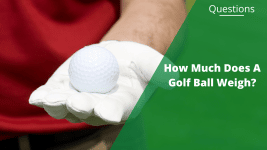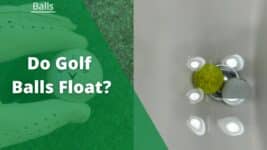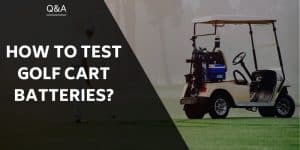Low-compression golf balls (30-60) can help high handicappers, beginners, or seniors with slow swing speeds get more distance. On the other hand, a higher compression golf ball (80-120) will work best for low handicappers with faster swing speeds.
If you use a ball that’s too hard for your swing speed, it won’t compress or “bounce” off your club. Then, you won’t achieve optimal distance. However, if you use a ball that’s too soft, it can be less accurate.
The key is to find the right golf ball with the right compression for your swing speed. That’s why we purchased many of the most popular balls, tested them, and recorded their compression rating.
I’ve compiled a compression chart with +30 of the most popular balls on PGATourSuperstore. It’s one of the best places to find the popular golf balls, and most list the compression ratings. They also often have deals on the top golf brands.
Read on to find the right ball for your game and to see how compression affects your game besides distance.

Golf Ball Compression Chart
Note: Download a PDF of the golf ball compression chart to keep on your phone while shopping for golf balls.
How Do I Know What Compression Golf Ball To Use?
The best way to find out which compression golf ball to use is to find the one that suits your swing speed. I’ve created a golf ball compression vs swing speed chart so you can choose accordingly.
| Swing Speed
(mph) |
<70 | 70 | 80 | 90 | 100 | 110 | 120 |
| Golf Ball Compression | Very Soft
30-35 |
Soft
40-50 |
Soft
50-65 |
Mid
70-85 |
Mid
85-95 |
Firm
95-105 |
Very Firm
105-115 |
You can use a swing speed monitor to find your exact swing speed. Once you know your speed, check the chart to find the ideal compression golf ball.
I use 80-compression or 90-compression golf balls, which correspond to my swing speed of around 90-95 mph and generally offer more durability.
Read More: What compression golf ball should I use?
Who Should Use a Low-Compression Golf Ball?
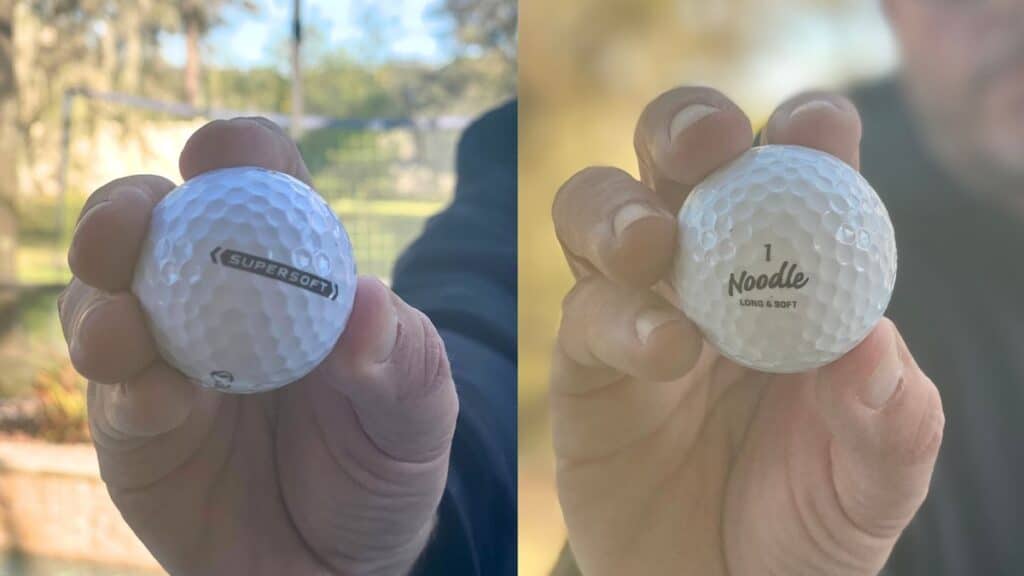
I’d recommend low-compression golf balls for high handicaps or beginners.
Beginners usually have slow swing speeds between 60-80mph so that a softer ball will give them greater distance and more forgiveness with each swing.
The Callaway Supersoft, Titleist TruFeel, and TaylorMade Noodle Long And Soft are great low-compression golf balls.
Check this post for more golf balls for slow swing speeds.
Who Should Use a High-Compression Golf Ball?
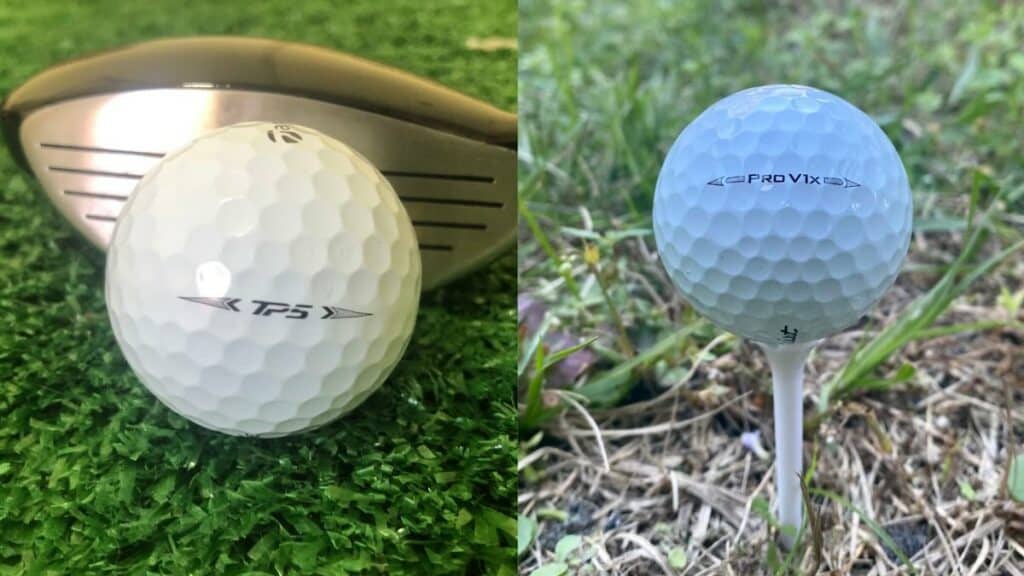
Mid-handicappers like myself will find that 70 (medium compression golf balls) or above generate the best results. Although, honestly, the rules are much more lenient if you’ve got a mid-range swing speed.
You can opt for higher or lower-compression golf balls, which might be the right golf ball compression for you. I mostly prefer the TaylorMade TP5 and Titleist Tour Speed, and let me tell you, I am HOOKED. These are the most reliable golf balls for my needs.
High-compression or mid-compression golf balls will give you better control, accuracy, feel, and trajectory with each shot if you’re a low handicapper.
The Titleist Pro V1X is your safest bet.
Read more: Golf balls for 100mph swing speeds.
How Compression Affects Your Golf Ball
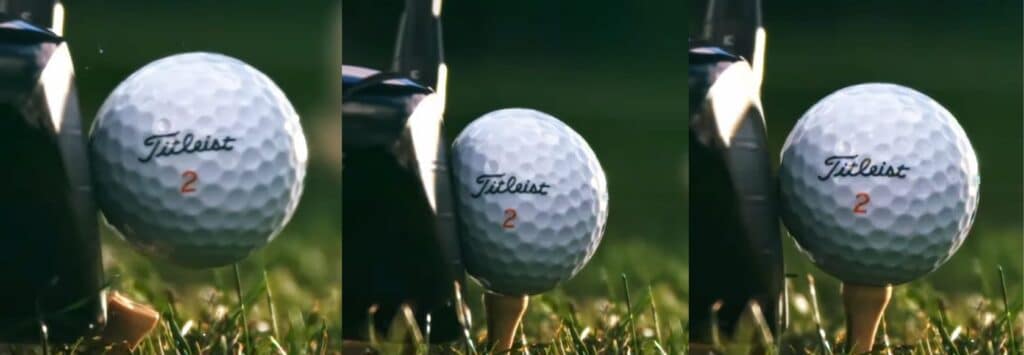
A golf ball’s compression measures how much it compresses or deforms upon impact.
Generally, most golf balls with a low compression will feel softer, whereas those with a higher compression rating will have a more firm feel.
Note: Just because your ball feels soft does not mean it has low compression.
The feel of the ball also depends on its cover. Urethane is softer, so those with a urethane cover will feel softer than their ionomer-covered counterparts.
Apart from the feel, here’s how your ball’s compression can affect other factors:
- Ball Speed: Lower compression balls have slower speeds off the clubface because they compress more and take longer to become round again. This only applies to faster swing speeds. You’ll compress the lower compression ball better with slower swing speeds.
- Ball Flight: Flight depends on the dimple pattern on the ball. This is why manufacturers pair high-trajectory dimple patterns with low-compression balls. This interaction helps to offset the loss in speed.
- Launch angle: Higher compression balls launch at a lower angle and have a flatter flight.
- Spin: More compression results in more backspin. A multi-layer ball like a 5-piece golf ball will create more spin with the driver and the wedges than 2-piece golf balls.
- Cover Material: The spin also depends on the ball’s cover material. A soft cover on a firm ball’s core will give a higher spin rate. A Golf ball manufacturer usually pairs a higher compression ball with a softer urethane cover.
- Forgiveness: Off-center shots on a higher compression ball can be exaggerated, while a softer ball dampens the effects of a wrong shot. This is also why soft balls are better for beginners.
Learn more: What’s Inside of Golf Balls? Check out the full article.
Abdul Moiz is a skilled golfer and professional writer. He graduated with a Bachelor of Business Administration from the National University of Sciences and Technology in Islamabad and has played golf for over 5 years. He has a handicap index of 18.5, uses TaylorMade Sim driver, and loves his 60-degree wedge. He's tested and reviewed over 50 products and specializes in reviewing budget-friendly golf club sets. You can connect with Abdul at X, LinkedIn, or Work.AbdulMoiz@gmail.com.

